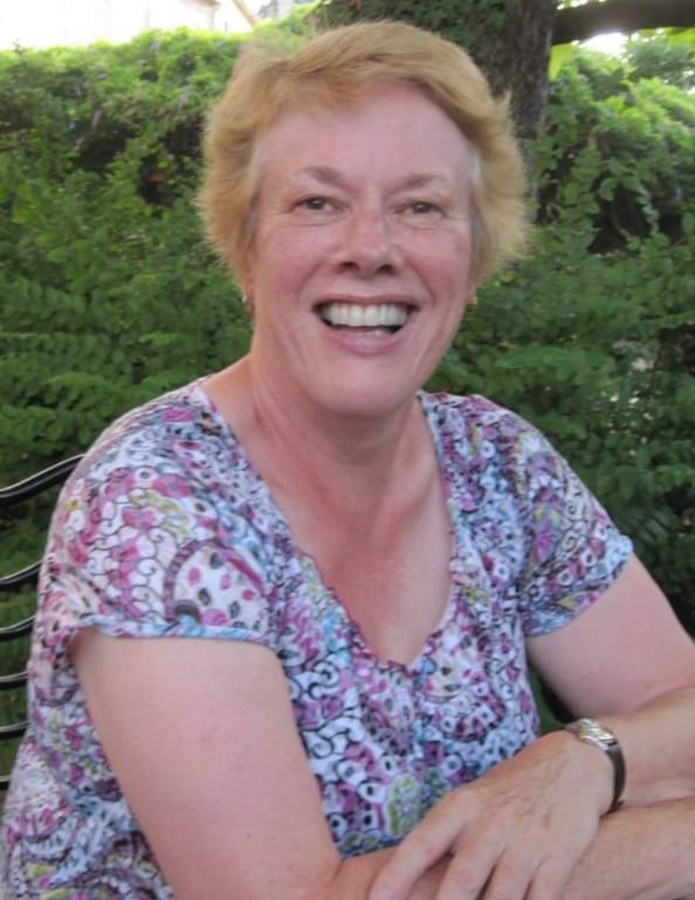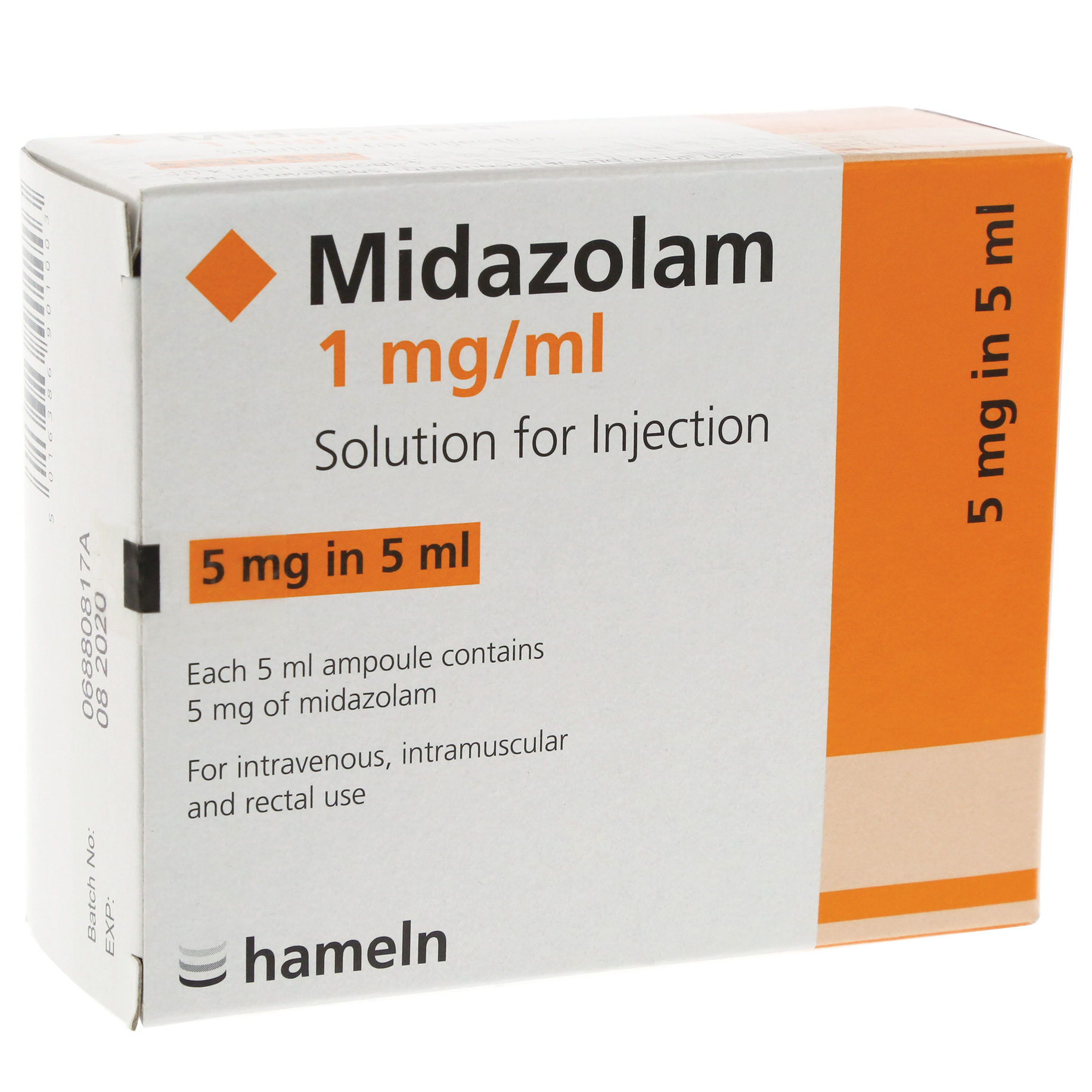Our disturbing theory about current clinical practice in end-of-life care
Since we published our first article about our families’ experiences with the powerful sedative drug midazolam, we have received a lot of correspondence and comments from around the world. As expected, we received one or two defensive comments from medical and nursing professionals. Also as expected, we received a great many very upsetting accounts of similar experiences from people whose aged and sick relatives had received midazolam shortly before they died.
Mostly, these people have simply wanted to share their experiences. In some cases they were or are planning to make complaints to health authorities about the way their loved ones were treated and often, midazolam is only one part of the picture.
We want to avoid too much emotion in our discussion of this issue. We are interested in examining the data furnished by people’s personal and necessarily subjective experiences and using that data to inform our hypothesis, which we would like to invite interested parties to test, prove or disprove as the case may be.
Our hypothesis is this: That a potentially significant number or proportion of aged and sick people presenting for medical treatment in the end stages of life may be being placed on a de facto “pathway” to death. That a significant factor in the design and purpose of this “pathway” may be the convenience of medical and nursing staff and professionals. That this “pathway” may involve the extensive use of midazolam as an agent of what we might call “extreme sedation”, rendering the patients immobile and unable to communicate, eat, drink or perform other bodily functions. That patients on this “pathway” may be effectively “fast-tracked” to death. That one role of midazolam in this context may be to mask the distress that these patients would otherwise exhibit, ensuring minimal protest or scrutiny from patients’ relatives and loved ones.
This may seem to some an implausible hypothesis and perhaps it is. From the point of view of relatives of patients in relevant circumstances, however, there appears to be a number of common elements that often emerge and tend to encourage similar theories. For example, it is reported that staff and professionals are often evasive about the use and dosage of midazolam when talking to relatives of patients. It is reported that staff and professionals often falsely describe midazolam as having pain-suppressing attributes. It is reported that staff and professionals describe the inertia and uncommunicative state of patients dosed with midazolam as symptoms of the patients’ underlying illnesses. It is often reported that staff and professionals become hostile and defensive when they are queried about the use, purpose and dosages of midazolam in particular cases. All these elements were present in the case of my wife’s father, Jakim, who died in 2018 in a palliative care hospice.
In the above paragraphs I have deliberately chosen to use the word “pathway” to describe the course of clinical practice applied to the terminally ill. This is a reference to the “Liverpool Care Pathway” which was the subject of considerable controversy in the United Kingdom about 10 years ago. The Liverpool Care Pathway was intended to be a solution to the seemingly intractable problem of “very poor quality of care of the dying” – to use the words of one of the high-profile people appointed in 2012 to review the pathway after it became controversial. Rabbi Baroness Julia Neuberger wrote that the pathway had been developed in the late 1990s and published as a formal guideline in 2003 “to help staff think through what needed to be done to help people to have a dignified, comfortable and pain-free death”.
But after 10 years or so, a national storm broke as stories of terrible treatment of the dying began to filter into the press and soon the Liverpool Care Pathway was being widely described as “a pathway to killing people that doctors deem worthless”. Pushed against its will into commissioning a review, the UK Government was told that the guidelines themselves were not the problem, but the lack of humane care applied by too many practitioners had poisoned the “brand”. After a mountain of horrific evidence was heard, the pathway was withdrawn.
Baroness Neuberger noted the need for individual care plans and the need to “place a particular emphasis on ensuring dying patients are helped to eat and drink for as long as they wish to do so, emphasized because of all we had heard about withdrawal of fluids from dying people who were desperately thirsty”. This resonates with our direct experience. When Sylvia’s father was not rendered totally uncommunicative by heavy doses of midazolam he was anxious to eat and drink. This is why we have put forward our unpleasant hypothesis that midazolam may be being used as part of a “pathway” that may fast-track people towards their deaths in a way that is cheap and non-labour-intensive for practitioners but unpleasant for the patients, who are rendered inert and unable to complain.
It’s a hypothesis. We are open to evidence that may disprove it.
Meanwhile, here is some of the correspondence we have received:
Katherine’s story

Midazolam was a drug that was administered to my mum far too frequently and with every known excuse/reason provided by nursing staff.
For 48 days my mother was a patient of xxxxx Hospital in xxxxxx, Tasmania and during these 48 days I had concerns. To begin with my concerns were solely around the commencement of the syringe driver, but upon seeing a copy of the medical file far more concerns came to light.
One of the most unethical and alarming (apart from the excessive drugging) was my mother’s oncologist filling in a MOLST form – which is an end of life form – less than 24 hours after my mother was admitted, ticking the box “comfort measures only, allow natural dying”. This form was kept secret from the patient and immediate family. In fact, the only people that knew this form existed were the nursing staff on the xxxxx Ward. So my mum, the patient and immediate family were all believing that the staff were trying to help mum and get rid of her clots so she could go home, yet behind her back a different narrative that mum NEVER agreed to was being played out.
I remember one night having a discussion with Mum’s oncologist in which I said that I would like the syringe driver to be stopped as there was a clear correlation between the driver starting and some confusion happening. The oncologist seemed deeply offended that an uneducated individual was challenging her and requesting something she didn’t agree with.
One day, I visited Mum and I recall walking into the room and found her “asleep”. There is a distinct difference in someone sleeping naturally and someone “sleeping” due to sedation and Mum fell into the latter category. The first thing I thought was that Mums’ drugs had been increased, so the moment everyone left I took a photo of her syringe driver and sadly, I was correct. The midazolam dose went from 2.5mg to 10mg over 24 hours.
Seeing this I was absolutely disgusted. Disgusted also in the fact that that morning, the oncologist had come in and tried to tell my father about “the illness progressing”, when she knew full well my mum wasn’t responding properly at that moment as she had her sedative dose quadrupled in 24 hours.
I was too emotional in seeing that change to speak with any nursing staff that day, but I did my research that night with two friends who are nurses. I asked them why this would occur. Both advised me that there was no reason why the sedation should be quadrupled, and that I should query this. The following day, it was really quite upsetting seeing mum trying to function but ultimately she couldn’t. Because she was so heavily sedated her movements were slow. I was scared about her eating her food as I didn’t want her to choke. I chose to speak with a nurse and went to the nurse’s station with my father. My father initially asked if the nurse thought Mum’s drugs were too high, to which the reply was “No”. I then asked why my mother’s drugs had been doubled, to which the nurse replied with a puzzled look on her face: “No, they haven’t been doubled”. So I asked why the drugs had gone from 2.5mg to 10mg. The moment I specified the amounts I was asked to go to the “quiet room” with her for a one-to-one chat.
Later that same day, my father and I were informed that we were having the head of palliative care from the xxxxxxx Hospital sent to give us a second opinion. I assumed a person offering a second opinion (especially one, who had NEVER met the patient, NEVER treated the patient, NEVER knew the patient’s medical history) would come with questions and want to understand our concerns before attempting to speak on the situation. Well, this approach didn’t occur. He arrived, took my father and I into a room and started talking about my mother’s condition from a simple skim over the medical file. During this meeting, I asked him why the midazolam was quadrupled in 24 hours, he ignored this and started talking about Covid and how it is not Covid that kills a patient but the inflammation in the body. Mum didn’t have Covid. He continued waffling on and I asked again about the quadrupled dose, and he again decided to ignore answering this. I asked yet again and he obviously realised his approach wasn’t going to stop me asking. His reply was that 10mg was not a big dose: it was what someone would receive for getting a colonoscopy (that’s great, mum wasn’t having a procedure so why did she need this dose?). He then went on to say that palliative care is not an accurate science, and sometimes they cannot get things right and they can administer drugs in anticipation for what may happen. This seems to me a dangerous approach to medicine.
Three days later this doctor was the one who put Mum into a palliative sedation administering the midazolam dose at 20mg and then adding in Haloperidol at 5mg and Hydromorphone at 8mg. By this stage no matter what I said nothing would stop them. They were hell-bent on carrying out a specific action and me speaking up was not going to change this.
Two weeks after my mother’s passing, I chose to lodge a complaint with the hospital. My main concern was the syringe driver and I wanted answers over that. The reply I received was arrogant: it was literally a case of telling me I could find the answers out myself in the medical file. I obtained a copy of the medical file nearly two months after my mother passed and what I read shocked me. It was interesting to see how frequently both my Mum’s oncologist, the care coordinator of the ward and the social worker – who had in fact never met me, nor introduced herself to me – wrote about my supposed mental instability and behavioural issues: all because I chose to challenge the status quo.
I turned to the drug chart and here I was appalled with what I read. I dissected that drug chart top to bottom and cross-referenced it with the notes in the medical file. I broke up each drug that they gave to my mother and recorded these in a spreadsheet, listing the dates, times and dosage amounts. Looking back, all it showed me was a patient being so excessively drugged that it was unethical in my eyes. In my opinion there was nothing that my Mum was doing or experiencing in those 48 days that warranted the level of drugs, in particular midazolam. There was one nurse who, every night she was on call, would give my mother EVERY PRN drug at the maximum dose multiple times throughout the night – yet when I cross-referenced the medical notes of hers the reasons why all PRN drugs were given didn’t match up. There were many days where my mother was receiving doses of midazolam alone that were totalling 47.5mg in one day. Add to this the morphine dose and one day, mum had near 80mg of pain-relief and sedation combined.
Currently, I have AHPRA investigating some matters as there were many horrendous findings I located upon receipt of the medical file. I have even been told by a top medical negligence lawyer that I have reason to be concerned, so this is likely an option once AHPRA complete their investigation.
The dismissive attitude from the nursing staff and oncologist in the hospital was deplorable. What concerns me the most is this was a palliative care ward, so the communication and support for patients and family should be front and centre of mind. Yet it seemed their egos were what mattered most. I was the anomaly in this setting. Instead of being the distressed loved one blindly accepting what I was told, I was challenging them and doing my own investigation. I wasn’t buying the inconsistencies they were putting down, but rather than anyone in that setting trying to explain the situation it was easier to simply write about me in the medical file and not care about injecting mum with midazolam.
Stories like this need to be told and need to get out there, there are too many vulnerable patients being given this drug and it is doing irreversible damage. Palliative care wards are great at writing documents with fluffy words and motherhood statements, but their actions don’t match their words. From my experience, there are many changes that must occur in a palliative care setting.
Katherine Luttrell, Australia
Phoebe’s story
I am looking after my stepmother, she is terminally ill with cancer.
Six years ago my own mother died of cancer. She went finally to a hospice where she somehow one day became agitated. She had a urinary tract infection due to not being able to empty her bladder properly…
And now I realise that they gave her midazolam at that point basically to shut her up and speed up her death. I was not there so I only ever saw her for the next eight days which is how long it took for her to die.
I describe it as being “locked in” unable to move or speak. I felt very uncomfortable about it, I knew my Mum was in there. It just was not right, but my siblings were all fine about it. I still look back with absolute horror at what we allowed the smiley smiley hospice staff to do to our Mum and I regret fully that she ever went there. It all seemed so kind and seemed like a good idea. But it was hellish to see. I feel so bad that I could not, did not protect her from this and allow her a dignified “conscious” death.
Eleven weeks later my husband died at home also of cancer, which had been diagnosed a week before my mum died. When they mentioned hospice and midazolam for Sandy I just said no way: don’t dare give him that drug. He was fully conscious up to death: he just breathed away peacefully. It was sad but he was in control of his death.
Now I’m worried I won’t be able to fight for my stepmother but I’m going to do my best.
Phoebe Meg Stiven, Glasgow Scotland
Michael’s story
I have had the same disastrous, horrendous and life-altering experience as yourselves, whereby the aged care facility, xxxxx, administered midazolam concomitantly with morphine without my consent when there was no emergency. They did not consult me. The nursing home said they consulted a palliative care nurse who recommended midazolam. Days prior the syringe driver that was on my Mum delivering Morphine was off her, she pulled it out and the nursing home advised she refused to have it back on her. Well imagine my surprise that just a few days later I found it back on her, when the doctor said she was not capable of informed consent. I found out indirectly from one of the nurses that midazolam was now in the syringe driver. It was then that I started investigating what this drug was and learned how, if it was used in a 95-year-old elderly frail lady with existing problems that it could cause respiratory depression, heart attack or stroke. Well just days after it was applied to my mother – without my consent and with no explanation of the risks – my mother couldn’t speak anymore. Before they gave her midazolam she could hold a glass to drink from or sip from a cup that contained coffee.
I asked the doctor to take the midazolam off her. He refused and said he’d have to consult the palliative care nurse. He couldn’t get hold of her but got hold of another nurse who he claimed said that if it was taken off it could cause “withdrawal symptoms and agitation”. Of course he was scaring me. I didn’t want Mum to suffer, and therefore I asked him to reduce it. They started off with a 25mg dose of midazolam on a 95 year old woman with 40mg of morphine: you can imagine how potent and strong this is and the possible adverse effects it could have in someone of my mother’s age. Eventually, as a result of my complaint the doctor reduced it down to 15mg, then 10mg and then 5mg – as I demanded it when he wanted to keep 10mg – and then off altogether. Of course, he said there would be “agitation” with his scare tactics and kept repeating this. But in those days when I stayed with my mum all day and all night prior to her passing, as the damage had already been done she showed no agitation. Prior to midazolam use my mother had no respiratory problems, yet all of a sudden her breathing was terrible. She had severe respiratory congestion. She was struggling to breathe and you could hear the crackling in her lungs. Of course the doctor said this was “part of the dying process” and having “mucous secretions”. This doctor was doing everything to absolve himself from what he had done. I believe he and the nursing home and the palliative care nurse accelerated Mum’s death and took away her human right to leave this world on her own terms without their drug interference and total disrespect and disregard of my human rights as her son and attorney.
When my mother had been calling out in pain: “Ow!”, it was because she had critical limb ischaemia. She wasn’t agitated, she was just in pain. Of course the doctor claimed my mother was “agitated and delirious”. I complained about midazolam being used, and the doctor absolved himself by asserting that the palliative care team had recommended midazolam. NONE of them told me that they were giving this drug to my mother, nor that the syringe driver with morphine in it previously had been restarted and put back on her.
It was only days later on 19/1/2022 that my late beloved mother managed to say to me that “I am dying”: These were the last words she spoke to me, and thereafter she could not utter anything and had to be hydrated by foam swabs in her mouth, yet prior to this she could still speak and could still drink.
On the very last day on Earth for my late beloved mother, when she was struggling to breathe, the clinical co-ordinator came into the room and took my mother’s pulse which must have been faint. This woman cruelly rolled my mother on her side, using hot water and a towel and put it on Mum’s backside, all the while my mother was groaning. The woman kept saying: “It is OK Margaret. It is OK Margaret”. She then left her in a foetal position on her right side, hardly able to breathe, with her mouth half-down in the pillow and a pillow split between her legs on top of each other. I had to call staff in to put Mum on her back in a restful position.
I might note I had experienced other problems with this clinical co-ordinator in the past about all manner of things including Mum having vitamins in her room and with Mum’s “bowel movements” and “bowel chart”. I was there one day and the chart said she hadn’t been to the toilet for five days, even though I knew for certain she’d been the previous day when I was there. As a result the staff over-medicated her, causing diarrhoea. It was not the only time. This is what happens in these places.
I referred my mother’s case to the coroner’s court with all the details I had kept account of dating back to December. I didn’t assert that midazolam use was the primary cause of death but said I believed that it was a contributing factor in accelerating my mother’s death. I did not believe they would get involved. I expected they would just say she died of her “co-morbidities”. I was sitting in the funeral director’s office and the Coroner’s court rang the funeral director as I was sitting there, imagine my shock. I still don’t know whether they are going to do anything.
I’ve also complained to the HCCC about the use of midazolam without consent, and the nursing home staff are not happy. I was clearing out my Mother’s personal effects in the evening, and then went back in the morning to finish off but was denied entry. Management had been sent a copy of my complaint to the HCCC, and as a consequence I was denied entry and told to come back in business hours.
Apologies for the length of email, but this goes to show what is going on in these disgusting places in 2022, they are euthanizing people without consent. Just for the record the doctor said to me just days prior to her passing on text that my Mother “needs peaceful restful dying”, it is not up to this doctor to make life-altering decisions without consent based on what he believed my late mother “needed”.
Michael Alexander, Sydney
Watch Jacqui Deevoy’s documentary on this topic here:
https://brandnewtube.com/watch/documentary-a-good-death-jacqui-deevoy-ickonic_xxt6wCT4x85BB9U.html



